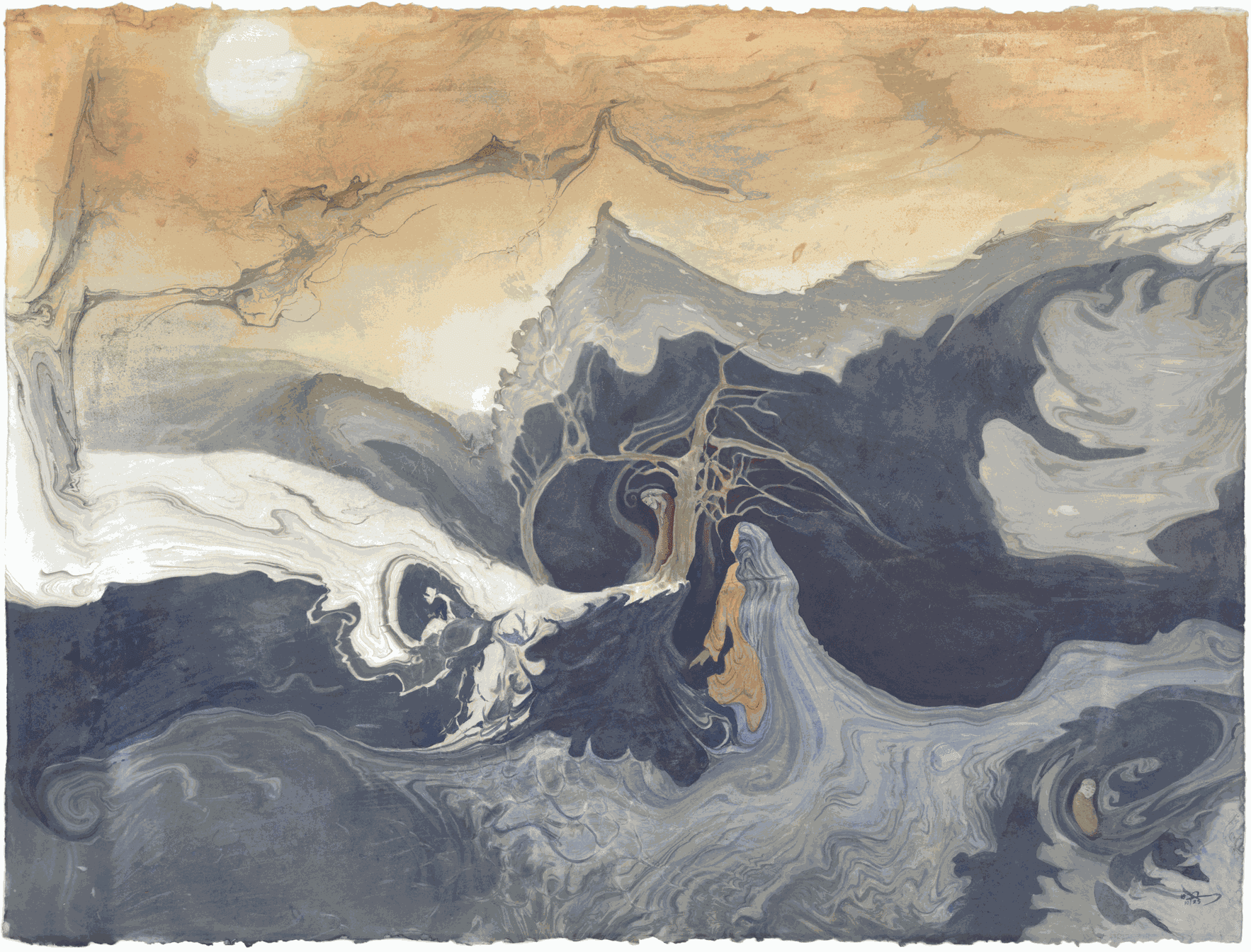
Spiritual Art: Transformative and Inspiring
Observe the gentle ebb and flow of your breath, much like the fluidity seen in spiritual art. How often do you take moments to connect with your inner self through mysticism?
Spiritual art has the profound capacity to illuminate this connection, fostering introspection and self-awareness. Embrace the transformative essence of wall art to delve deeper into your spiritual experiences.
Discovering Spiritual Art
Embarking on the journey of discovering spiritual art, entwined with mysticism, one immerses in an amalgamation of profound emotions and serene reflections. This exploration ignites a powerful dialogue between the viewer and the canvas, inviting contemplative introspection.
By engaging with spiritual art, one's understanding of "higher self" is enriched. Each stroke is a conduit to transcendent experiences, forging a path to uncharted realms of consciousness. From abstract embodiment to sacred symbolism, the allure of spiritual wall art resides in its potency to elevate and expand your spirit.
Origins and Evolution

Spiritual art has deep roots in human history—representing our quest for transcendence.
Early cave paintings often depicted shamanistic rituals, serving as the first forms of spiritual art.
As humans evolved, so did our means of expression, manifesting in diverse spiritual iconography across cultures. From the intricate mandalas in Eastern traditions to the sacred geometric patterns in various indigenous cultures, art became a medium to understand existence.
Fast forward to contemporary times, spiritual art has undergone a renaissance—incorporating modern techniques and mediums to convey age-old themes of inner peace, enlightenment, and the human connection to the divine.
Different Types of Spiritual Art
Abstract Spiritual Art transforms intangible concepts into visual experiences, allowing viewers to interpret the divine through shapes and colours.
Iconography involves the depiction of religious figures and sacred symbols, deeply rooted in historical and cultural traditions.
Mandala Art uses intricate, circular designs to represent the universe, serving as a focal point for meditation and spiritual growth. These artworks often feature repetitive patterns, symmetry, and detailed geometry, encapsulating the essence of balance and harmony.
Land Art is a contemporary movement that involves creating artworks within the landscape. Utilising natural materials and settings, it aims to connect viewers with the earth and cosmos. Artists such as Andy Goldsworthy and Robert Smithson have pioneered this form, inviting contemplation and a deeper appreciation of nature's spiritual dimensions.
Benefits of Spiritual Art
Spiritual wall art's therapeutic properties provide a conduit for emotional expression, allowing individuals to heal. Engaging with these works can elevate one's spiritual awareness, fostering introspection and a profound sense of connection with the universe, thus enriching inner peace and personal growth.
Emotional Well-being
Spiritual art has a profound impact on emotional well-being by providing an avenue for self-discovery.
Through engagement with spiritual artworks, individuals often find solace and a means to explore their inner landscapes. These pieces serve as a catalyst for emotional healing.
For example, mandalas enable viewers to enter a meditative state, fostering mindfulness and reducing stress. The repetition and symmetry can induce a calming effect.
Additionally, the immersive quality of land art can evoke a sense of grounding and serenity, essential for emotional resilience. This connection to nature enhances well-being.
By connecting with spiritual art, people can achieve a greater balance, finding peace through aesthetic and contemplative experiences.
Enhancing Mindfulness
Mindfulness, often intertwined with mysticism, is a practice that cultivates present-moment awareness and introspective clarity. Spiritual art can significantly enhance this practice.
- Engage with Mandalas: The intricate patterns found in mandalas encourage focused attention, promoting a meditative state.
- Create Sacred Spaces: Surrounding oneself with spiritual artworks can transform ordinary spaces into sanctuaries, fostering mindfulness.
- Participate in Art-Making: The process of creating spiritual art can be meditative, helping to centre the mind.
- Reflect on Symbology: Exploring the meanings of spiritual symbols in art can lead to mindful insights and deeper understanding.
- Nature-Inspired Art: Integration of nature-themed spiritual art can evoke a sense of tranquillity and groundedness, essential for mindfulness.
Mindfulness through art empowers individuals to connect deeply with their inner selves, amplifying self-awareness.
Engaging with spiritual art on a regular basis can harmonise one's mental state, reducing stress and fostering inner peace.
Consider incorporating spiritual artworks into daily rituals to heighten and sustain mindfulness throughout the day.
Creating Your Own Spiritual Art
Embark on a journey to self-expression by creating your own spiritual art. This endeavour is deeply personal, allowing you to explore the facets of your inner being.
Begin by choosing symbols and colours that resonate with your spiritual experiences. These elements can reflect your beliefs, aspirations, and the emotional landscapes you've traversed.
Let intuition guide you. The process of creation itself becomes a meditative practice.
Finding Inspiration
To find inspiration for your spiritual art, immerse yourself in the profound richness of your inner world and the universe.
Seek moments of quiet reflection where insights might reveal themselves.
Observe how nature's symbiotic relationships embody a form of divine harmony, a wellspring of artistic insight with its captivating colours, patterns, and rhythms.
Engaging with diverse spiritual practices can also ignite your creative spark. Delving into meditation, sacred texts, or ancient rituals provides a tapestry of rich cultural motifs to draw from. Fostering this inner dialogue can manifest in profound and evocative artwork. Exploring spirituality through art is thus both a journey and a destination.
Basic Techniques
Mastering spiritual art requires a few foundational techniques to express ethereal concepts effectively.
- Mindful Observation: Cultivate awareness of your surroundings and internal states.
- Symbolism: Incorporate symbols that hold personal or universal spiritual significance.
- Colour Theory: Use colour to evoke particular spiritual emotions or states.
- Textural Elements: Experiment with texture to add depth and tactile engagement.
- Layering: Develop complexity by adding multiple layers to your artwork.
Start with mindful observation to connect deeply with your subject matter.
Symbolism plays a crucial role in conveying complex spiritual narratives.
Utilise colour theory to translate emotions and states of being, creating an immersive experience.
Connecting with Your Inner Self
Artists often explore spirituality as a means of introspection, delving into their soul. Spiritual art serves as a conduit for self-discovery, offering viewers an opportunity to reflect on their own personal journeys.
Engaging with your artistry in this way may evoke a "meditative state". This enables the artist to tap into a realm beyond the physical, connecting internal experiences with universal symbolism. The portrayal of such intimate connections often resonates profoundly, inviting viewers to partake in an exploration of their inner realms.
Meditation Practices
Meditation practices serve as a cornerstone for enhancing one's spiritual and artistic journey.
- Mindful Breathing: Focus on your breath to anchor your awareness and foster a tranquil state of mind.
- Guided Visualisation: Use imagery to deepen your intuitive connection and stimulate creative inspiration.
- Mantra Chanting: Recite specific words or sounds to cultivate inner peace and attune to higher frequencies.
- Body Scan: Incrementally observe different parts of your body to release tension and achieve holistic relaxation.
These practices can enhance your ability to delve into your subconscious.
By integrating these meditation techniques, you may find your artwork reflecting a more profound spiritual depth.
Interpreting Your Art
Understanding the nuances of your spiritual artwork offers a transformative experience, bridging the gap between the conscious and the subconscious, allowing for a more profound connection with the underlying themes.
Using meditative practices allows you to tap into your deeper emotions.
Often, spontaneous elements within your artwork might represent aspects of your subconscious mind.
Colours, shapes and textures you choose can reveal underlying emotions or unresolved experiences.
Observing these choices can provide valuable insights and promote self-awareness, ultimately furthering your personal growth.
Remember, the aim is not perfection, but an authentic expression of your inner self. Through introspective analysis, your artwork can become a mirror reflecting the intricacies of your spiritual journey.
